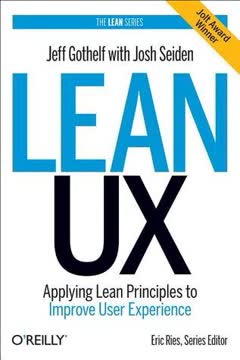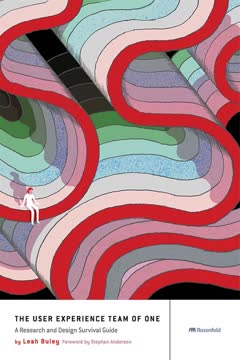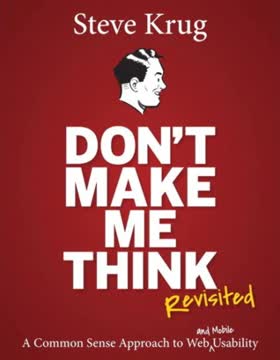つの重要なポイント
1. 早期かつ頻繁な検証で、誰も欲しがらない製品を作ることを避ける
早期に検証することで、製品が魅力的で使いやすいことを確認し、そうでない場合は修正する時間を確保できます。
早期の検証は時間とお金を節約します。 誰も欲しがらない製品を数ヶ月かけて作る代わりに、アイデアを迅速かつ安価に検証しましょう。以下のような手法を使用します:
- 製品を作る前に興味を測るランディングページテスト
- ユーザーの問題を理解するための顧客インタビュー
- 使いやすさを評価するプロトタイプテスト
- 新機能の需要をテストするフィーチャースタブ
早期にフィードバックを得ることで、重要なリソースを投資する前に製品の方向性を調整できます。これにより、人々が実際に欲しがり、支払う価値のあるものを作る可能性が高まります。
2. ユーザーリサーチを行い、顧客の問題とニーズを理解する
この段階で犯す最大のミスは、テスト対象者に自分が取り組んでいることやその素晴らしさを最初に伝えることです。自分のアイデアを売り込もうとすることほどセッションを偏らせるものはありません。話すためではなく、聞くためにそこにいるのです。
話すよりも聞くことが重要です。 効果的なユーザーリサーチは、顧客の実際の問題とニーズを理解することにあります。以下のような手法を使用します:
- ユーザーの自然な環境で観察するコンテクスチュアルインクワイアリ
- 解決策ではなく問題について尋ねるオープンエンドインタビュー
- プロトタイプと対話するユーザーを観察するユーザビリティテスト
ユーザーの痛点や目標を明らかにすることに焦点を当てます。誘導的な質問や製品の売り込みは避けましょう。目標は、ユーザーの行動や動機についての真の洞察を得て、製品の決定に役立てることです。
3. 効率のために適切なタイミングで適切なリサーチ手法を使用する
建物の中に留まること。建物の外に出ることが必ずしも必要ではありません。実際、建物の中に留まる方がはるかに効率的な場合もあります。
リサーチ手法を戦略的に選択する。 製品開発の異なる段階では、異なるリサーチアプローチが必要です。以下を考慮します:
- プロトタイプに対する迅速なフィードバックを得るためのリモートテスト
- ユーザビリティの問題を迅速に特定するための無監視テスト
- 定性的リサーチからの仮説を検証するための調査
- デザイン変更の影響を測定するためのA/Bテスト
リサーチの目的と制約に合わせて手法を選びます。リモート手法は、対面テストよりも迅速かつ安価に貴重な洞察を提供することができます。定性と定量の手法を組み合わせて、全体像を把握します。
4. 仮説を検証するために必要なだけのデザインを行い、完璧を目指さない
早期の美化は、Myspaceよりも多くのUX災害の原因となっています。言いましたよ。
初期段階では機能を重視する。 初期段階では、視覚的な洗練にこだわらないようにします。代わりに:
- レイアウトオプションを探るためのクイックスケッチを使用
- コア機能をテストするための低忠実度ワイヤーフレームを作成
- ユーザーフローを検証するためのインタラクティブプロトタイプを構築
- コアコンセプトが検証されるまで高忠実度モックアップを遅らせる
目標は、コアの仮定と使いやすさをできるだけ早く検証することです。美しいデザインは時間がかかり、ユーザーフィードバックに基づいて方向を変更することに抵抗を感じさせることがあります。視覚的な洗練は後の段階に残しておきます。
5. デザインパターンとフレームワークを活用して開発を迅速化する
大多数のインタラクションは、革新的で画期的なものを必要としません。使いやすく、シンプルで明確なものが求められます。
車輪の再発明を避ける。 多くの一般的なインターフェース要素には既に確立されたベストプラクティスがあります。既存のパターンとフレームワークを活用して:
- デザインと開発の時間を短縮
- 製品全体の一貫性を確保
- 試行錯誤されたユーザビリティ原則の恩恵を受ける
Bootstrap、Material Design、iOS Human Interface Guidelinesなどのリソースは、既製のコンポーネントとパターンを提供します。これらをブランドに合わせてカスタマイズしますが、標準機能のために完全に新しいインタラクションを作成するプレッシャーを感じる必要はありません。
6. 最小限の実行可能製品(MVP)を作成してコア仮定をテストする
限定的な製品は多くのことをしないかもしれませんが、行うことはうまく行います。ユーザーに何をすべきかを明確に伝え、重大な問題を解決するか、重大な問題の一部を解決します。
小さく、焦点を絞って始める。 MVPは以下を満たすべきです:
- 特定の問題を非常にうまく解決する
- 明確な価値提案を持つ
- 範囲が限られていても使いやすい
- 意味のあるユーザーフィードバックを収集できる
最もリスクの高い仮定に対処するコア機能セットから始めます。「あったらいいな」機能を追加する誘惑を避けます。各追加機能は複雑さと開発時間を増加させ、必ずしも価値を追加するわけではありません。ユーザーフィードバックに基づいて機能を拡張していきます。
7. A/Bテストと意味のある指標でデザインの影響を測定する
デザインはアートではありません。デザインが会社の収益に与える影響と完全に切り離された理想的なデザインがあると考えるなら、あなたはアーティストであり、デザイナーではありません。デザインには目的と目標があり、それらは測定可能です。
データ駆動のデザイン決定。 A/Bテストを使用して:
- 主要な指標に対するデザイン変更の影響を測定
- デザイン仮説を検証または無効化
- 製品を継続的に改善
ユーザー満足度とビジネスの成功を真に示す指標に焦点を当てます。例えば:
- 継続率
- コンバージョン率
- ユーザーあたりの収益
- ネットプロモータースコア(NPS)
実際のビジネス成果と相関しない虚栄指標は避けます。単一の指標が全体のストーリーを語ることはないことを忘れず、複数の指標にわたるトレンドを見ます。
8. クロスファンクショナルチームで迅速に反復する
ユーザーリサーチ部門、ユーザーエクスペリエンス部門、プロダクト部門、エンジニアリング部門を設置する代わりに、例えば初回ユーザーエクスペリエンスに焦点を当てたチームを想像してみてください。
サイロを打破して迅速な反復を実現する。 クロスファンクショナルチームは:
- 異なる分野間のコミュニケーションを改善
- 引き渡しの遅延や誤解を減少
- 迅速なプロトタイピングとテストを可能に
- 意思決定においてすべての視点を考慮
各チームにプロダクトマネジメント、デザイン、エンジニアリングなどの代表者を含めます。これにより、ユーザーフィードバックに基づいて迅速に方向転換でき、技術的な制約が設計プロセスの早期に考慮されます。その結果、より迅速で一貫性のある製品開発が実現します。
最終更新日:
FAQ
What's UX for Lean Startups about?
- Focus on User Experience: The book emphasizes creating products that people will buy, use, and love by focusing on user experience (UX).
- Lean Startup Methodology: It integrates Lean Startup principles, promoting rapid experimentation and learning from customers to validate product ideas.
- Accessible to All: Laura Klein makes UX concepts accessible to entrepreneurs and product managers, regardless of their design background.
Why should I read UX for Lean Startups?
- Practical Guidance: Offers actionable advice and tools for product development, helping avoid common UX design pitfalls.
- Real-World Examples: Includes insights and examples from Klein's experience in startups, illustrating the concepts discussed.
- Improves Product Success: Helps increase the chances of creating products that resonate with users and succeed in the market.
What are the key takeaways of UX for Lean Startups?
- User-Centered Design: Validating user needs through direct engagement and research is crucial.
- Iterative Process: Promotes continuous feedback and refinement to meet user expectations.
- Lean UX Tools: Introduces tools like early validation, prototyping, and testing to streamline design and reduce waste.
What is Lean UX, according to UX for Lean Startups?
- Validation of Hypotheses: Focuses on validating product hypotheses through user feedback, treating development as experiments.
- User-Centered Approach: Ensures design decisions are informed by real user insights.
- Agile and Iterative: Aligns with Agile methodologies, promoting rapid iterations and collaboration.
How does Laura Klein suggest validating product ideas in UX for Lean Startups?
- Early Validation Techniques: Recommends methods like ethnographic studies and prototype testing to gather feedback before full-scale development.
- Focus on User Pain Points: Advises identifying and validating whether your product addresses user problems effectively.
- Iterative Feedback Loop: Encourages integrating user insights continuously into the design process.
What is the Minimum Viable Product (MVP) concept in UX for Lean Startups?
- Definition of MVP: The simplest product version to validate hypotheses with minimal effort and resources.
- Focus on Learning: Aims to learn about user preferences quickly, enabling informed iterations.
- Avoiding Waste: Prevents spending on unwanted features, aligning development with user demand.
How does UX for Lean Startups define user research?
- Understanding Users: Gathering insights about users' needs, behaviors, and pain points to inform design.
- Methods and Techniques: Covers interviews, surveys, and usability testing as research methods.
- Continuous Process: Emphasizes ongoing research throughout the product lifecycle.
What are some specific methods for user research mentioned in UX for Lean Startups?
- Ethnographic Studies: Observing users in their environment to understand behaviors and challenges.
- Landing-Page Tests: Gauging interest in a product idea with simple landing pages before development.
- Prototype Testing: Using interactive prototypes to test usability and gather feedback.
How does UX for Lean Startups suggest handling design changes?
- Iterative Design: Advocates for making changes based on user feedback and testing results.
- Avoiding Over-Design: Suggests prioritizing functionality over visual design early in the process.
- Cross-Functional Collaboration: Encourages collaboration to ensure practical and user-focused design changes.
What role do metrics play in UX for Lean Startups?
- Measuring Success: Essential for evaluating design changes and understanding user behavior.
- A/B Testing: Gathers quantitative data on design impact on user actions and business outcomes.
- User Happiness: Emphasizes tracking metrics related to retention and engagement to meet user needs.
What are some common mistakes to avoid in user research, according to UX for Lean Startups?
- Assuming User Needs: Warns against making assumptions without validating through research.
- Ignoring User Feedback: Failing to incorporate feedback can lead to unmet user expectations.
- Overcomplicating Designs: Advises simplicity and clarity in design to enhance user experience.
What are the best quotes from UX for Lean Startups and what do they mean?
- “Startups require good design...”: Highlights the need for effective design practices even with limited resources.
- “Lean UX isn’t about adding features...”: Focuses on understanding user needs and business goals over feature addition.
- “You need to solve a real problem...”: Stresses the importance of user research in identifying genuine user pain points.
レビュー
本書『UX for Lean Startups』は、ユーザーリサーチ、検証、反復デザインに関する実践的なアドバイスが高く評価され、主に好意的なレビューを受けている。読者は著者のユーモアと率直なアプローチを評価している。この本は、起業家、プロダクトデザイナー、製品開発に関わるすべての人に推奨されている。一部の読者は、内容の繰り返しやカジュアルな文体を批判しているが、多くの人々はリーン原則をUXデザインに適用するための貴重なリソースと見なしている。経験豊富なプロフェッショナルにとっては新しい情報が少ないかもしれないが、全体として、リーンスタートアップの方法論にUXの実践を統合するための有用なガイドとされている。
Similar Books














